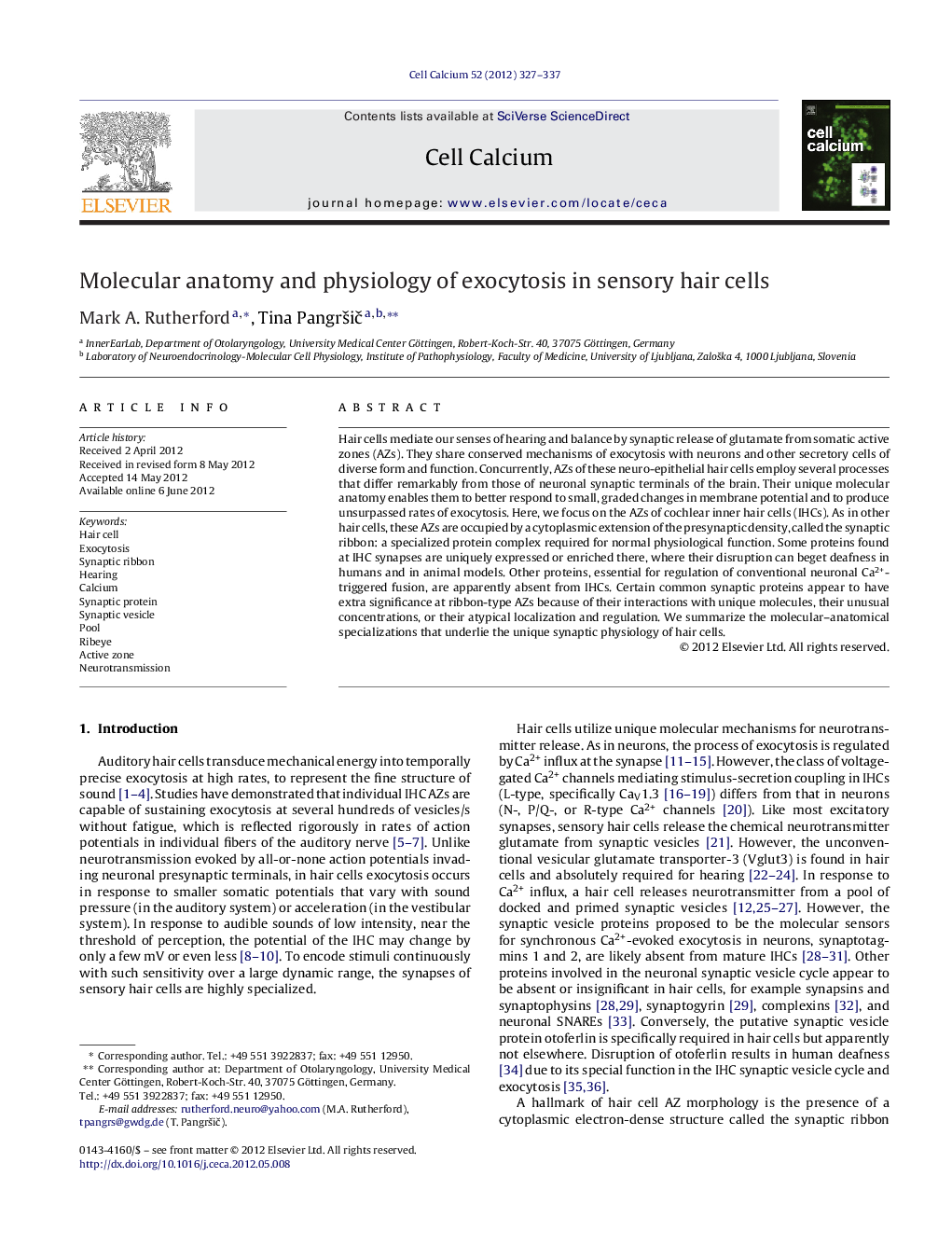| Article ID | Journal | Published Year | Pages | File Type |
|---|---|---|---|---|
| 8463457 | Cell Calcium | 2012 | 11 Pages |
Abstract
Hair cells mediate our senses of hearing and balance by synaptic release of glutamate from somatic active zones (AZs). They share conserved mechanisms of exocytosis with neurons and other secretory cells of diverse form and function. Concurrently, AZs of these neuro-epithelial hair cells employ several processes that differ remarkably from those of neuronal synaptic terminals of the brain. Their unique molecular anatomy enables them to better respond to small, graded changes in membrane potential and to produce unsurpassed rates of exocytosis. Here, we focus on the AZs of cochlear inner hair cells (IHCs). As in other hair cells, these AZs are occupied by a cytoplasmic extension of the presynaptic density, called the synaptic ribbon: a specialized protein complex required for normal physiological function. Some proteins found at IHC synapses are uniquely expressed or enriched there, where their disruption can beget deafness in humans and in animal models. Other proteins, essential for regulation of conventional neuronal Ca2+-triggered fusion, are apparently absent from IHCs. Certain common synaptic proteins appear to have extra significance at ribbon-type AZs because of their interactions with unique molecules, their unusual concentrations, or their atypical localization and regulation. We summarize the molecular-anatomical specializations that underlie the unique synaptic physiology of hair cells.
Keywords
Related Topics
Life Sciences
Biochemistry, Genetics and Molecular Biology
Cell Biology
Authors
Mark A. Rutherford, Tina PangrÅ¡iÄ,
